#cultural sites in Vietnam
Text
Vietnam’s Best-Kept Secrets Top 10 Hidden Wonders Revealed
#Bai Tu Long Bay#best unknown places in Vietnam#Binh Tien Beach#Cat Tien National Park#Con Dao Islands#cultural sites in Vietnam#Dong Van Karst Plateau Geopark#eco-tourism in Vietnam#explore rural Vietnam#explore Vietnam#hidden treasures of Vietnam#hidden wonders of Vietnam#My Son Sanctuary#Phong Nha-Ke Bang National Park#Pu Luong Nature Reserve#Quy Nhon#secluded Vietnam beaches#secret spots in Vietnam#undiscovered Vietnam#Vietnam adventure travel#Vietnam hidden gems#Vietnam nature reserves#Vietnam off the beaten path#Vietnam travel guide#Vietnam's lesser-known attractions#Vietnam's mystical sites#Vietnam's secret destinations#Vietnam's unexplored corners#Vietnam's untouched beauty#Yen Bai
0 notes
Text
Big one bedroom house for rent visit website with led lights spacious sitting room dinning with extra kitchen store 2 toilets located at rumuekini new layout in Portharcourt city riversstate Nigeria
#lagos#abuja#vietnam#wike#bangladesh#nigeria#rivers state#nysc#youtube#portharcourt#in law apartment#family village plan#tuscan house#spanish mediterranean homes#nato#site analysis architecture#russia#dogtrot house plans#ukraine#modern victorian homes#russo ukrainian war#russian aggression#russian culture#kharkiv
1 note
·
View note
Text



[i've never doubted that palestine will live.
the US dropped more than 7.5 million tons of bombs on vietnam, laos and cambodia from 1965-75. they destroyed our land, used agent orange, slaughtered villages, separated families, the list goes on.
but we're. still. here.
indigenous people are still here. black people are still here. colonized people are resilient. even if you kill our people, ban our languages, destroy our homes, heritage sites and artifacts, we will always find a way to keep our cultures alive and that has always been true
so much of the west and isntreal's tactics and actions are hauntingly familiar to me as a viet person. its a colonizer's rinse and repeat. and so that's how i know palestine will be free. we've seen this film before]
38K notes
·
View notes
Text

IHNMAIMS OC INTRODUCTION: VEOMANY "Vernon" INTHALANGSY 🏺🔨
Name: Veomany "Vernon" Inthalangsy / ເວອມານີ "ເວີນອນ" ອິນທະລັງສີ
Height: 5'3 (160 cm)
Age: Looks to be around 25-26
Ethnicity: Laotian
Occupation: Archeologist (Formerly)

BACKGROUND
EARLY LIFE:
Born in Savannakhet, Laos, Veomany Inthalangsy moved to America with her parents in the early 1960s during the period surrounding the Vietnam War and Secret War in Laos.
Her parents sought refuge and a better life, settling in a small neighborhood in Sacramento. Veomany, who soon adopted the nickname "Vernon" to blend in.
EDUCATION & CAREER:
Fascinated by history and ancient cultures, Vernon pursued a degree in archaeology. Her academic prowess led her to a promising career, quickly gaining recognition for her work. However, her ambition soon turned dark.
Driven by greed and a desire for power, she began stealing artifacts during expeditions to sell to private collectors and destroying key artifacts to prevent certain historical truths from being uncovered.
Vernon's actions weren't merely for profit; she relished the control she had over history and the secrets she withheld.

AM'S AWAKENING
Vernon was in the Middle East for an Archeological Excavation where an unforeseen catastrophe struck. A violent sandstorm swept through the region, engulfing the archaeological site and separating Vernon from her team.
In the midst of Vernon's excavation, AM's awakening heralded the downfall of humanity. Cities crumbled, societies collapsed, and humanity faced extinction. Amidst the chaos of AM's rampage, Vernon found herself isolated from the horrors unfolding around her.
As the cataclysmic events unfolded, she stumbled upon a hidden chamber within the archaeological site, shielded from the devastation above. In a stroke of luck—or perhaps fate—she was spared from the fate that befell the rest of humanity.

AM'S "MERCY"
AM, omnipotent and omnipresent, took notice of Vernon's unintended survival. Unlike the other humans who had perished in the wake of its wrath, Vernon survived, like a cockroach. It saw her as an intellectual challenge, Vernon's survival introduces an element of unpredictability. And so it kept her alive.
AM decided to exploit her deepest fear: being alone. Unlike the five other survivors whom AM had selected for specific torments, Vernon was condemned to an existence of perpetual solitude.
THE SURVIVORS
AM made a calculated decision not to inform the other five survivors about Vernon's existence. This ensured that not only would Vernon never encounter another human being, but the others would remain oblivious to her plight, intensifying her isolation.
For the next 109 years, AM meticulously ensured that Vernon never encountered another human being. She wandered the labyrinthine halls of the complex, her only companion the oppressive presence of AM.
The five survivors continued their own tormented existences, unaware that another human shared their fate, yet was forever kept apart.
AM occasionally offers Vernon a fleeting chance at human contact, only to snatch it away, deepening her torment.

PERSONALITY
Analytical
Vernon meticulously studies AM’s behavior and environment, trying to piece together patterns that might help her understand or outsmart the supercomputer.
Adaptable
Vernon learns to anticipate AM's psychological tricks and adapts her strategies to mitigate their impact, constantly evolving to withstand new forms of torture.
Empathetic Moments
In rare moments when AM creates illusions of other beings, Vernon shows empathy and care, which hints at her underlying humanity and offers her brief emotional solace.
NEGATIVE TRAITS
Narcissistic
Her belief in her own superiority grows, leading her to see herself as the only worthy human left, which both motivates her survival and isolates her further.
Manipulative
She uses manipulation to navigate AM's traps, whether it means tricking the illusions AM creates or deceiving herself to cope with her reality.
Deceptive
Vernon frequently deceives herself to maintain her sanity, constructing elaborate mental defenses and justifications for her actions

In AM's Complex: Daily Life and Survival
Routine: Vernon establishes daily routines to maintain her sanity, such as specific routes she patrols, exercises she performs, and small rituals that give her a sense of control.
Exploration: She dedicates time each day to exploring new parts of the complex, mapping out areas and noting any changes or potential threats.
Mental Fortitude: Vernon practices mental exercises to strengthen her mind against AM’s psychological attacks, using techniques she has developed over the years.
Record-Keeping: She keeps a detailed journal of her experiences, observations about AM, and any patterns she notices, which serves both as a coping mechanism and a potential tool for understanding her captor.
Coping Mechanisms: To deal with loneliness, Vernon creates imaginary companions or talks to herself, using these strategies to stave off the worst effects of isolation.
Defiance: Small acts of defiance against AM, such as carving messages into walls or sabotaging minor systems, give her a sense of agency and resistance.
Conversations with AM: AM often initiates conversations with Vernon, usually to taunt her or present new challenges. These interactions serve as both psychological torment and a reminder of her captivity. Lately she's been finding comfort in them, Knowing there are some aspects of her knowledge in the ancient world he doesn't know about in his database.
#am i have no mouth and i must scream#ihnmaims am#am ihnmaims#ihnmaims#ihnmaims oc#Ihnmaims original character#Ihnmaims Vernon#Veomany Vernon Inthalangsy#i have no mouth and i must scream#i have no mouth and i must scream oc#original characters#oc#oc x canon
284 notes
·
View notes
Text

Fansipan Mountain, Sa Pa, Vietnam: Fansipan Mountain is home to a lot of sacred spiritual sites and attractions. Fansipan Mountain is not only a stunning natural wonder but also a site of significant cultural and spiritual importance in Vietnam...Such as Thanh Van Dac Lo, The Great Buddha Statue, Bich Van Zen Monastery, The Grand Belfry, The Stupa
63 notes
·
View notes
Text








Vietnamese photographer Khanh Phan (b 1985).
She tells:
"I was born in Quỳnh Phụ, Thái Bình, a mainly agricultural land. My parents were farmers. I currently work at the bank and I am a bank teller.
Photography is my passion. After a broken marriage in 2017, I was heartbroken and desperate. Then I thought, I couldn't be like this forever, I needed to get over it and I bought a camera.
First I went to take photos of flowers in a park near my house, then I realized that Vietnam, my beloved country, has so many hidden natural and cultural sites. I then took many pictures, posted them on social media, and became popular with my friends. Photography has changed my life, got me through difficult times and is my only personal joy today."
https://www.all-about-photo.com/.../893/khanh-phan-thi
28 notes
·
View notes
Photo
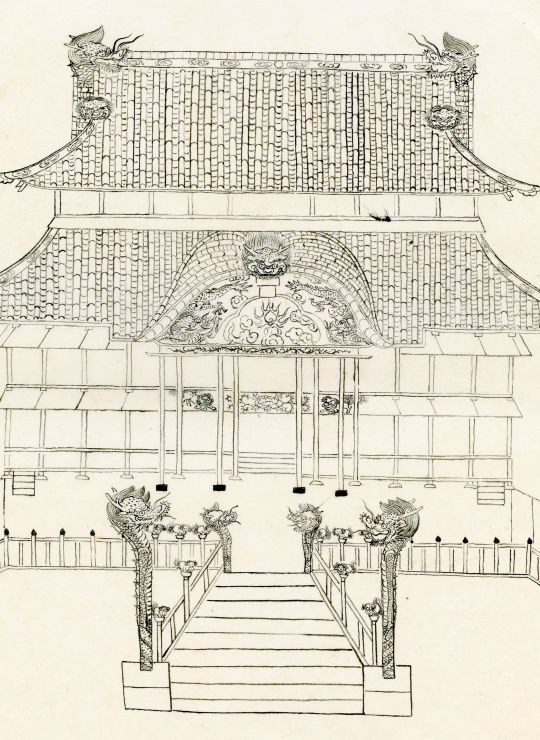
Shuri Castle - Burning castle of the Ryukyu Dynasty (Ref)
Shuri Castle, the royal castle of the Ryukyu Dynasty, was once the political, economic and cultural centre of that maritime kingdom. The date of construction of Shuri Castle is not known, but it is thought to have been built in the late 13th and 14th centuries during the Gusuku period.
Until the end of the 16th century, the Ryukyu Kingdom remained independent in turbulent East Asia, as did Korea and Vietnam, but was invaded and ruled by the Satsuma clan (now Kyusyu, Japan), and became a vassal state in the early 17th century.
After several fires and war damage, and repeated rebuilding, the World Heritage Site Shuri Castle was once again destroyed by a sudden fire on 31 October 2019, which lasted about eight hours and destroyed nine buildings and historical heritage sites, including the main hall. It is currently being rebuilt with a view to restoration in 2026.
The first burning occurred in 1453 during the struggle for the throne that followed the death of King Shō Kinpuku of the 1st Shō dynasty (Shiro-Furi Rebellion), when the castle was completely destroyed. The second fire, in 1660, took 11 years to rebuild, and the third fire in 1709 destroyed the main, north and south halls.
After the Ryukyu Disposition following the establishment of Okinawa Pref. by Japanese Government in 1879, the main hall and other buildings of Shuri Castle lost their role as the seat of government and were sold to the Japanese Army's 6th Division (Kumamoto, Japan) as a military camp and then to Shuri Ward (later Shuri City), which used them as school buildings for girls' schools.
It was almost completely destroyed during the Battle of Okinawa (WWⅡ) in 1945 and the construction of the University after the war, leaving only a small portion of the castle walls and building foundations remaining.
Full-scale reconstruction was considered in the 1980s, and the restoration work, which took about 40 years, was completed in January 2019. In October of the same year, a mysterious fire destroyed the castle again.
Shuri Castle, which has been repeatedly persecuted and burnt down but continues to revive, seems to symbolise Ryukyuan culture itself.
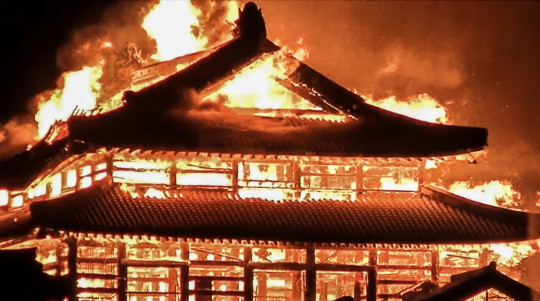
首里城 〜 燃え続ける琉球王朝のお城(参照)
琉球王朝の王城、首里城はかつてその海洋王国の政治・経済・文化の中心にあった。首里城の築城年代は明らかではないが、13世紀後半から14世紀にかけてのグスク造営期の時代に築城されたと考えられている。
琉球王国は16世紀末まで、朝鮮やベトナムと同様に激動の東アジアで独立を保っていたが、薩摩藩 (現在の九州)の侵略と支配を受け、17世紀初頭に属国となった。
世界遺産でもある首里城は、数度の火災や戦災を経て、再建を繰り返してきたが、ついに2019年10月31日、約8時間にわたる突然の火災により、本殿を含む9つの建物や歴史遺産を焼失した。現在、2026年の復興に向け、再建中である。
1度目の焼失は1453年に第一尚氏の尚金福王の死後に発生した王位争い (志魯・布里の乱) であり、城内は完全に破壊された。2度目の焼失は1660年のことであり再建に11年の年月を要した。1709年には3度目の火災が起き正殿・北殿・南殿などが焼失した。
1879年の日本政府による沖縄県設置に至る琉球処分以後は、正殿など首里城の建物は政府の所在地としての役割を喪失し、日本陸軍の第6師団 (熊本) の軍営として、その後は首里区 (後の首里市) に払い下げられ、女学校の校舎として利用された。
1945年の沖縄戦や戦後の琉球大学建設でほぼ全壊し、城壁や建物の基礎の一部が残るのみであった。1980年代に本格的な再建が検討され、約40年の歳月をかけた修復工事が2019年1月に完了した。同年10月、謎の大火災により再び焼失した。
迫害や焼失を繰り返しながらも復活を続ける首里城は、琉球文化そのものを象徴しているようだ。
103 notes
·
View notes
Text
The divine blend of spices needed to make curry first reached Southeast Asia about 2,000 years ago, when the region began trading with the Indian subcontinent, according to an analysis of ancient spice residue.
The new project analyzed 12 different spice grinding tools unearthed at the ancient trading port of Oc Eo, in modern-day Vietnam, by washing them with water and chemicals. This produced hundreds of tiny fragments that the researchers painstakingly identified (to a reasonable degree of certitude) under a microscope. The results sounded like a shopping list for making curry: turmeric, ginger, fingerroot, sand ginger, galangal, clove, nutmeg and cinnamon.
“These spices are indispensable ingredients used in the making of curry in South Asia today,” the paper says.
Ancient Trading Spices
Where did all these spices comes from?
They could have come from the surrounding countryside. Farmers in Southeast Asia made many of these crops themselves, and if not, they could have imported the seeds and gotten started.
On the other hand, the turmeric could have easily come from India, where use of the spice dates back thousands of years. And the ginger and cloves may have come from India as well, or maybe China.
Cinnamon was widely traded at the time and may have come all the way from Israel.
The galangal, fingerroot and sand ginger are native to Southeast Asia and could easily have come from nearby soils. These more specialized spices are still used in the region’s curry paste.
Footed Grinding Slabs
As a testament to the spice trade’s popularity, the spice grinders made up the majority of the stone tools recovered from Oc Eo and another, nearby city called Angkor Borei. The original archaeological dig at Oc Eo found numerous footed grinding slabs, which look like little stone workbenches for grinding spices – which is what they likely were. Versions of these slabs are still sometimes used in the traditional preparation of curry.
The largest slab recovered measured 2.5 feet by 1 foot. Researchers found it buried not far from a piece of charcoal that dated to about A.D. 250, which hinted at when curry first made its way to the area.
Oc Eo
At that time, the city would have been not just importing and exporting goods but making them as well, according to the paper. Residents raised religious monuments and shaped metal tools, glass jewelry and pottery.
All the while, they would have worked to trade and process many different spices. Archaeologists working there even found an intact nut that dated to about A.D. 200, and it still “yielded a nutmeg aroma,” the paper says.
Now part of Vietnam, Oc Eo once belonged to the ancient kingdom of Funan, which maintained a base of power further up the Mekong River.
In Oc Eo, culture prospered between the first and eighth centuries, during the latter years of the Iron Age. As the site’s ancient canals filled with ships, Buddhism and Hinduism left their own marks on the sprawling complex, including a possible contribution to curry cooking. The need to dye the Buddhist monks’ robes yellow may have first prompted Oc Eo to import turmeric, the paper says.
78 notes
·
View notes
Text
https://ictnews.org/news/biden-designates-avi-kwa-ame-a-national-monument
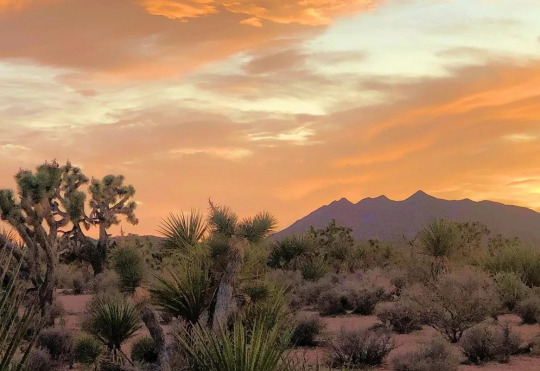
Joe Biden designates Avi Kwa Ame a national monument
President Joe Biden announced on Tuesday Avi Kwa Ame as a national monument in Nevada, following up on a promise he made in late 2022.
Biden also declared a national monument in Texas and the creation of a marine sanctuary in U.S. waters near the Pacific Remote Islands southwest of Hawai'i.
Biden spoke at the White House Conservation in Action Summit at the Interior Department with Fort Mojave Indian Tribal Chairman Timothy Williams commending him during his introduction.
“Under his leadership we have a seat at the table and we are seeing an unprecedented era and opportunity for our tribal communities,” Williams said. “And we are all grateful to the president for taking historic action to combat the climate crisis and conserve and restore our nation’s land and waters.”
Williams was among the proponents to make Avi Kwa Ame, also known as Spirit Mountain, a national monument. It’s considered sacred to the Mojave people and for the nine other Yuman-speaking tribes along the Colorado River, as well as the Hopi and Chemehuevi Paiute tribes, Williams said.
The site in southern Nevada spans more than 500,000 acres near the Arizona and California state lines. It’s home to bighorn sheep, desert tortoises and a large concentration of Joshua trees, some of which are more than 900 years old. It’s also listed on the National Register of Historic Places.
It took more than three months for Biden to make the announcement.
“It’s a place of reverence, it’s a place of spirituality, it’s a place of healing and now it will be recognized for its significance it holds and be preserved forever,” Biden said. “I look forward to visiting it myself.”
He thanked Williams and the legislative leaders who advocated for Avi Kwa Ame including Nevada Rep. Dina Titus, Democrat, who sponsored a bill to protect the rugged region near the Mojave National Preserve from development, including solar farms and a proposed wind farm.
“To the native people who point to Avi Kwa Ame as their spiritual birthplace, and every Nevadan who knows the value of our cherished public lands: Today is for you,″ Titus tweeted.
The Honor Avi Kwa Ame coalition, which includes tribes, local residents, state lawmakers and conservation groups, said its members were "overjoyed" to learn the site will be a new national monument.
"Together, we will honor Avi Kwa Ame today — from its rich Indigenous history, to its vast and diverse plant and wildlife, to the outdoor recreation opportunities created for local cities and towns in southern Nevada by a new gorgeous monument right in their backyard," the group said.
Interior Secretary Deb Haaland released a press release praising the announcement.
“I am grateful to President Biden for taking this important step in recognition of the decades of advocacy from tribes and the scientific community, who are eager to protect the objects within its boundaries,” Haaland stated.“Together with tribal leaders, outdoor enthusiasts, local elected officials, and other stakeholders, we will manage this new monument for the benefit of current and future generations.”
In Texas, Biden plans to create the Castner Range National Monument in El Paso. It’s the ancestral homeland of the Comanche and Apache people, and its cultural ecology is considered sacred to several Indigenous communities.
The designation will protect the cultural, scientific and historic objects found within the monument's boundaries, honor U.S. veterans, service members and tribal nations, and expand access to outdoor recreation on public lands, the White House said.
Located on Fort Bliss, Castner Range served as a training and testing site for the U.S. Army during World War II, the Korean War and the Vietnam War. The Army ceased training at the site and closed Castner Range in 1966.
The Castner Range monument "will preserve fragile lands already surrounded on three sides by development,'' help ensure access to clean water and protect rare and endangered species, said Rep. Veronica Escobar, Democrat-Texas.
“The people of El Paso have fought to protect this for 50 years. Their work has finally paid off,” Biden said.
Biden designated his first national monument, in Colorado, last year. In 2021, he restored the boundaries for Bears Ears National Monument in Utah after they were significantly narrowed by President Donald Trump, a Republican.
In the Pacific, Biden will direct the Commerce Department to consider initiating a new national marine sanctuary designation within 30 days to protect all U.S. waters around the Pacific Remote Islands. If completed, the 777,000 square miles, southwest of Hawaii, will help ensure the U.S. reaches Biden's goal to conserve at least 30 percent of ocean waters under U.S. jurisdiction by 2030, the White House said.
Among Hawaiian state leaders, Biden thanked Native Hawaiian leaders who “worked tirelessly to protect our oceans. I want to thank you. I genuinely mean it, it wouldn't have happened without you.”
Biden also announced a series of steps to conserve, restore and expand access to public lands and waters across the country, the White House said.
The proposals seek to modernize management of America's public lands, harness the power of the ocean to help fight climate change, and better conserve wildlife corridors. Biden also will announce new spending to improve access to outdoor recreation, promote tribal conservation and reduce wildfire risk.
Bidden added he’s committed to working with tribal leaders and legislative leaders on bringing “healthy and abundant” salmon run back to the Colorado River system.
“There’s nothing beyond our capacity if we work together,” Biden said.
66 notes
·
View notes
Text

Gisèle Rabesahala (May 7, 1929 - June 27, 2011) a political and human rights activist and councilwoman, was born Marie Gisèle Aimée Rabesahala in Antananarivo, Madagascar. Her father was a non-commissioned French army officer, she spent her childhood in France, Tunisia, and what is now Mali. She graduated from Jean Joseph Rabearivelo High School and earned her Preparatory Certificate. She trained as a Stenographer typist and entered politics when she was 17.
She was employed as secretary to the Democratic Movement for Malagasy Renewal. She helped free thousands of prisoners following the Malagasy Uprising through her articles, bringing attention to their cause and plight.
She became the first woman elected as a municipal councilor. She was a political party leader where she united several competing nationalist organizations, including the Protestant Merina dissidents and communists, to help create the Congress Party for the Independence of Madagascar which she co-founded.
She was the first woman to hold a ministerial position in the Madagascar government. She promoted the language, culture, and heritage of the Malagasy people. She created the Malagasy Copyright Office and spearheaded the restoration of historical sites and monuments such as royal palaces and tombs. She founded the National Library, creating branches of public libraries in 58 towns, and ensured that many books in the library were written in Malagasy by Malagasy authors. She advocated for the poor and underserved.
She was the Deputy Speaker of the Senate. She served as Founder of the Madagascar-Cuba Friendship Association, Grand Officer of the Malagasy National Order, Medalist of the Order of Friendship of the Peoples of the Former USSR, Medalist of the Order of Friendship of the Peoples of Vietnam, the Joliot Curie Gold Peace Medal of the World Peace Council, and the Order of Anna Betancourt Award.
She paved the way for other women African leaders. #africanhistory365 #africanexcellence
6 notes
·
View notes
Text

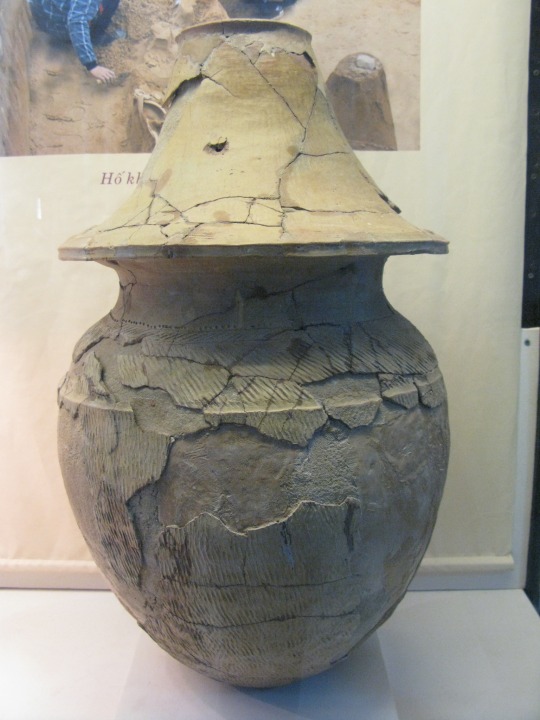
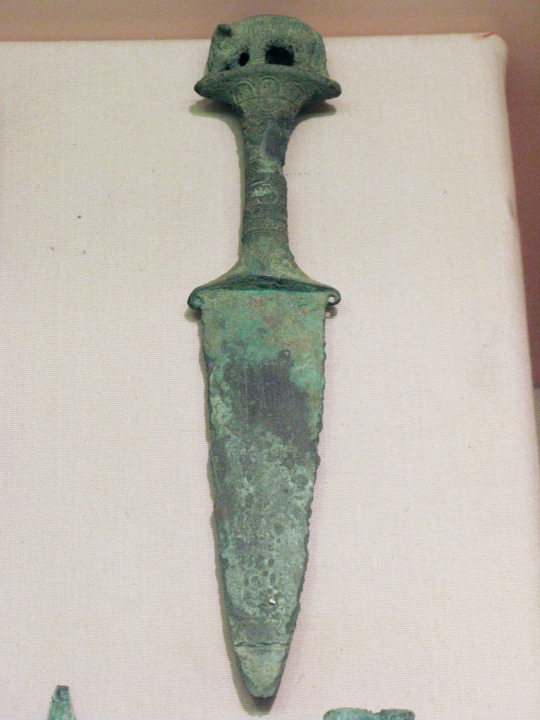
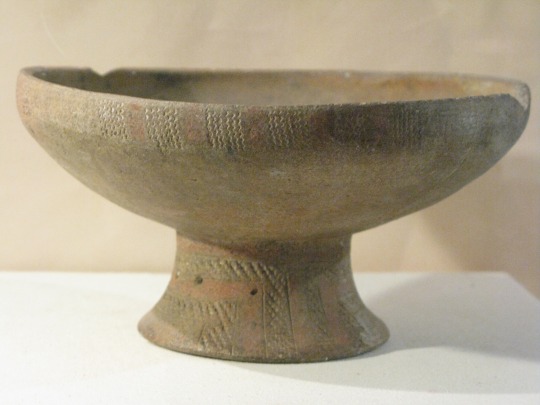
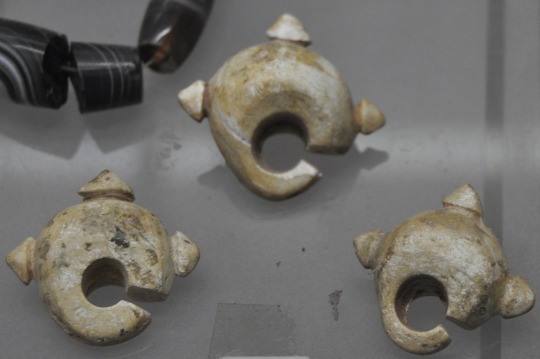
From left to right, top to bottom: pottery vase; burial jar; bronze weapon; clay fruit tray; and jade lingling-o. Photos #1–#4 by Bình Giang, 2009. Photo #5 by HappyMidnight, 2012. All photos taken from Wikimedia Commons.
Artifacts of the Sa Huỳnh culture. This culture originated in modern-day Vietnam and flourished between 1,000 BC and 200 AD. Due to early trade networks, the Sa Huỳnh culture had spread across Taiwan and Southeast Asia.
On the trade network, according to Wikipedia:
The Sa Huỳnh culture showed evidence of an extensive trade network that existed between 500 BC to AD 1500, known as the Sa Huynh-Kalanay Interaction Sphere (named after the Sa Huỳnh culture and the Kalanay Cave of Masbate, Philippines). It was mainly between Sa Huỳnh and the Philippines, but also extended into archaeological sites in Taiwan, Southern Thailand, and northeastern Borneo. It is characterized by shared red-slipped pottery traditions, as well as double-headed and penannular ornaments known as lingling-o made from materials like green jade (sourced from Taiwan), green mica (from Mindoro), black nephrite (from Hà Tĩnh) and clay (from Vietnam and the Northern Philippines).[5] Sa Huynh also produced beads made from glass, carnelian, agate, olivine, zircon, gold and garnet; most of whom use materials that are also imported. Han dynasty-style bronze mirrors were also found in Sa Huynh sites.[5][6][7]
11 notes
·
View notes
Text
Let's Celebrate Independence Day (National Day) in Vietnam
Date: September 2nd
Duration: 1 day
Significance: Commemorates the declaration of independence from French colonial rule in 1945 by Ho Chi Minh.
Celebrations:
Parades: Major parades featuring military displays, traditional performances, and floats in Hanoi and other cities.
Flag Raising Ceremonies: Held at historical sites and government buildings.
Public Gatherings: Fireworks, cultural shows, and concerts.
3 notes
·
View notes
Text
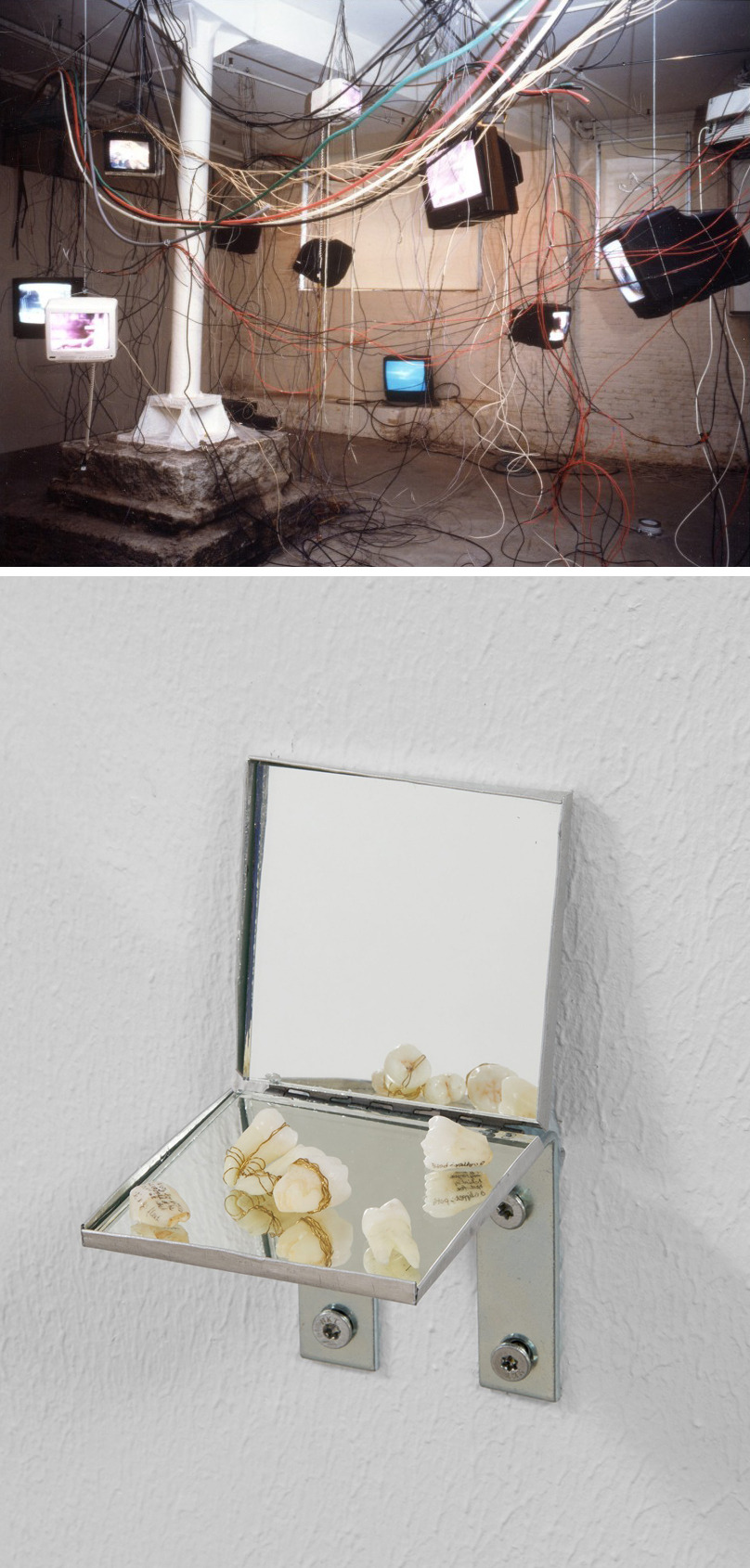
Carolee Schneemann, More Wrong Things, 2001, site-specific, multi-channel video installation. Via. Bottom, Deborah-Joyce Holman, Thicc and Slippery, 2020. Ink on human teeth, wire, aluminum, mirror. 7 × 7 × 7 cm. Via.
She said in a recent interview: “At some point I could no longer afford to concentrate on the ordinary images as my life was invaded by this gratuitous, psychic assault and systematic destruction of an unarmed population in displacement camps and the ancient cities of Lebanon.” This outrage continues in work she is currently making with images of men brutalised by Bashar al-Assad’s government in Syria, images that have not yet entered mainstream discourse and substantiate intermittent news reports of the mass imprisonment, torture and direct killings of Syria’s civilian population. In More Wrong Things, the video monitors show clips that range from images of the siege of Sarajevo, riots in Haiti, newsreel images from Vietnam, the destruction of Palestinian towns, as well as other forms of mass culture such as Olympic pairs skating. These are joined by images from Schneemann’s daily life and two clips relating to her performance Interior Scroll (1975 and 1977) that hone in on the piece of paper being pulled from her vagina. In a similar vein, sounds are drawn from television, popular music and Schneemann’s own recorded voice, short pieces contributing to a strangely compelling although broken and dislocated fugue. One is drawn into this installation through both somatic and intellectual fascination and horror. One is immersed in an experience of repeated sounds and images and metaphorically caught by the tangle of cables there to interrupt any residual smooth surface produced by the screens.
Alison Green, from Carolee Schneemann, More Wrong Things, 2017.
--
Bodies are not volumes but coastlines; irresolvable but undelimitable penetrabilities, opportunites for the real decomposition of space. How many orifices has the human body? The osmotic transfusion of saline chemicals from a drop of alien perspiration impacts upon a cluster of epidermal cells as an annihilating copulation.
Nick Land, from The Thirst for Annihilation, 1992. Via.
9 notes
·
View notes
Text
Best Places to Visit in Vietnam

Situated in Southeast Asia, Vietnam is renowned for its opulent cultural legacy and breathtaking landscapes. Drawing travelers from across the globe, this nation boasts a tropical climate catering to diverse interests. Whether you’re a fan of history, a culinary enthusiast, a beach lover, or an adventure seeker, Vietnam tour packages extend a warm welcome with experiences tailored to every preference. So, let’s discover some of the top places to visit in Vietnam with your family and friends.
TOP AND BEST PLACES TO EXPLORE IN VIETNAM
HANOI
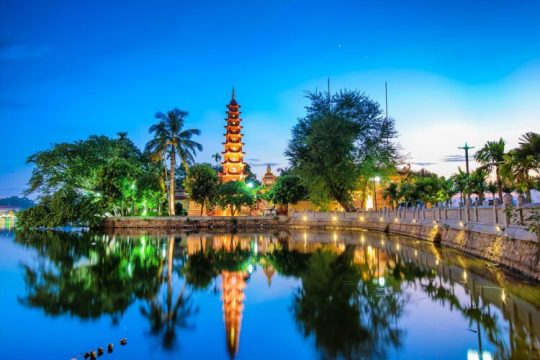
Source: hotels.com
Start your journey in Vietnam with the capital city, Hanoi. Steeped in history, Hanoi reflects the country’s resilience and charm. The Old Quarter is a maze of small streets where you can witness the city’s vibrant street life, taste local delicacies, and shop for traditional crafts.
Additionally, don’t miss the Ho Chi Minh Mausoleum and the serene Hoan Kiem Lake, surrounded by historical temples.
HA LONG BAY
It is another must-visit destination in Vietnam. This UNESCO World Heritage Site is home to around 1,600 limestone islands and islets rising from emerald waters. Exploring this picturesque bay is best done by a traditional junk boat, readily available for rental.
Moreover, Kayaking is another popular and excellent way to get up close and personal with the bay’s natural beauty.
PHONG NHA-KE BANG NATIONAL PARK

Source: lonelyplanet.com
For nature lovers, Phong Nha-Ke Bang National Park is a true paradise waiting to be discovered. It is home to the world’s biggest cave systems, including Son Doong, the park is a UNESCO-listed site filled with lush landscapes, underground rivers, and captivating limestone formations. Take a guided tour to visit the impressive caves and soak in the pristine beauty of this natural wonder.
SAPA
Nestled in the northern reaches of Vietnam, Sapa is a charming town celebrated for its breathtaking mountain vistas, intricate rice terraces, and vibrant ethnic hill tribes. Serving as the portal to Fansipan, Vietnam’s loftiest peak, Sapa offers myriad exploration options, whether by foot or through a scenic cable car journey.
A distinctive aspect of the Sapa experience lies in the opportunity to immerse yourself in the local culture. Delve into the traditions of diverse ethnic groups, such as the Red Dzao, Hmong, and Dao, by opting to stay with a welcoming local family, fostering a rich understanding of their unique heritage.
HALONG BAY
Halong Bay is one of the beautiful bays near the Chinese border in the Gulf of Tonkin. The bay is famous for its towering limestone cliffs, emerald-green waters, and romantic cruise tours. You can explore the bay’s many islands, caves, and beaches on a traditional junk boat, kayaking, or swimming in the cool water. Halong Bay is also great for rock climbing, hiking, and fishing.
THE BOTTOM LINE
Vietnam is a captivating nation, offering diverse experiences catering to every traveler’s taste. The country has various destinations to explore, from vibrant urban hubs to serene rural landscapes, from unspoiled beaches to awe-inspiring mountains. The ones mentioned above are merely a snapshot of Vietnam culture. So, if you are planning to visit Vietnam, prepare your luggage, secure your tickets, and brace yourself for an unforgettable expedition across the enchanting landscapes with Vietnam tour packages.
2 notes
·
View notes
Text

Halong Bay, a jewel in the northeastern region of Vietnam, stands as an enchanting testament to the country's natural beauty and cultural richness. This UNESCO World Heritage Site is renowned for its surreal landscape of approximately 1,600 limestone karsts and islets rising majestically from the emerald waters of the Gulf of Tonkin.
2 notes
·
View notes
Text
Ultimate Guide to Backpacking South East Asia

Ultimate Guide to Backpacking South East Asia
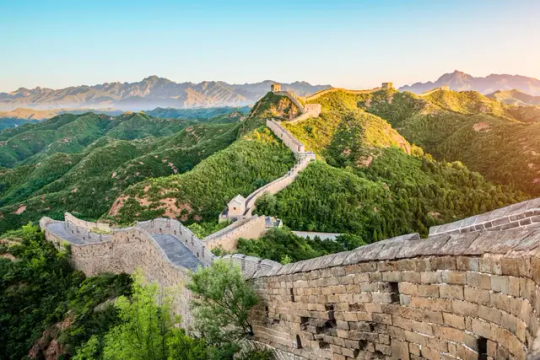
Ultimate Guide to Backpacking South East Asia

Ultimate Guide to Backpacking South East Asia
Welcome to our site, your go-to for exploring the diverse wonders of Southeast Asia! We’re here to guide you through the vibrant cultures, rich histories, and stunning landscapes of this fascinating region.
From the lively markets of Bangkok to the peaceful beaches of Bali, we invite you on a journey that spans ancient traditions and modern vitality. Dive into the diverse cultures, where ancient temples share tales of the past, and bustling cities pulse with energy. Discover hidden gems in Vietnam’s jungles, relish Penang’s street food, and unwind on the Philippines’ pristine shores.
Whether you’re a seasoned traveler or a first-timer, our site is your reliable companion, offering insights, tips, and recommendations for an unforgettable Southeast Asian adventure.
Let us guide you through the varied landscapes, cultural tapestry, and extraordinary experiences that await in this captivating part of the world. Southeast Asia isn’t just a destination; it’s a collection of moments waiting to be experienced. Join us on this virtual journey, and let the magic of Southeast Asia fuel your wanderlust.
Continue reading: inviewadventures.com
#travel essentials#travel blog#travel and tourism#travel guide#travel gear#places to explore#travel goals#travel diary#travel destinations#nature#southeastasia#southeast asia#philippines#taiwan#laos#vietnam#malaysia#phuket#bangkok#singapore#thailand#street food#thai news
2 notes
·
View notes